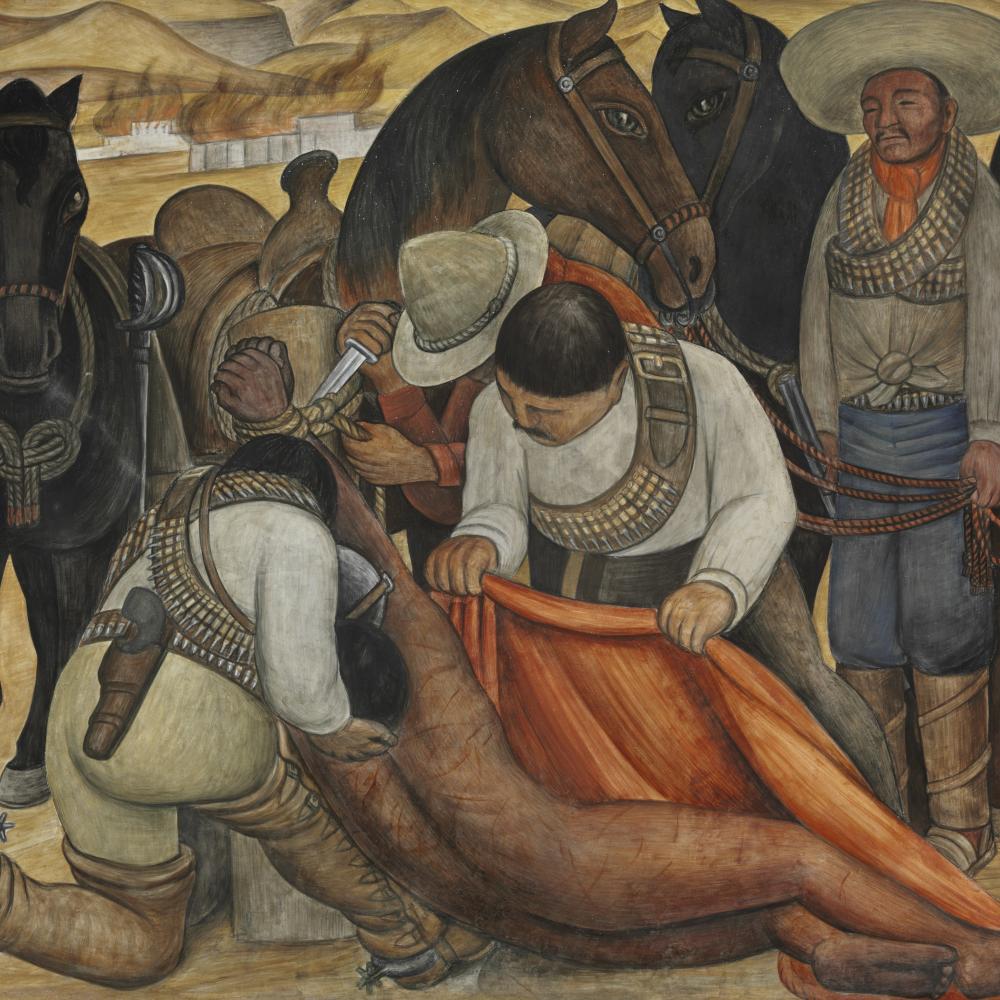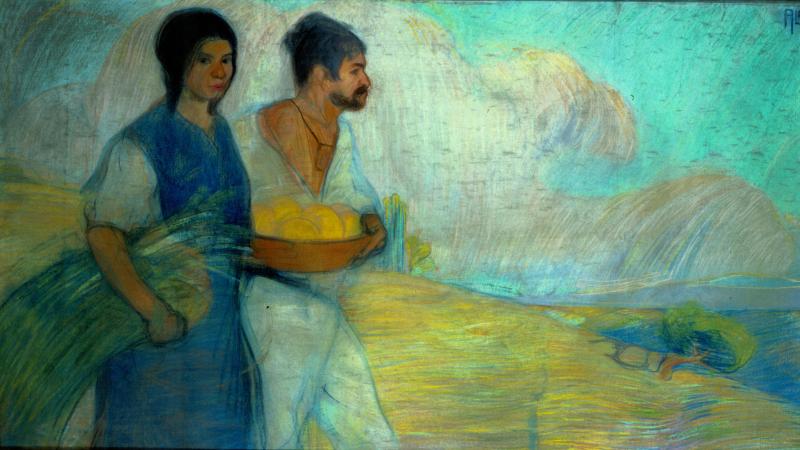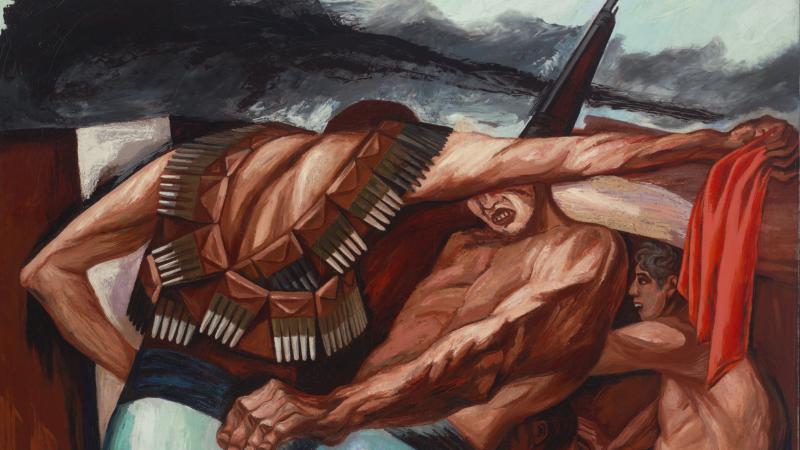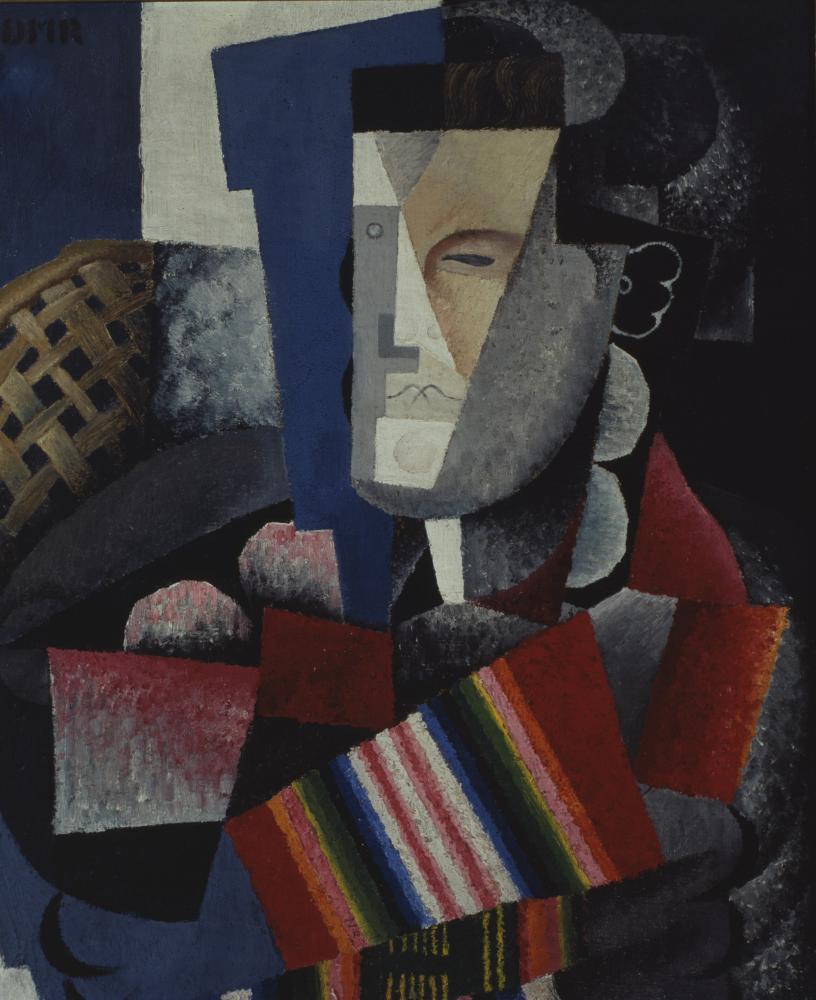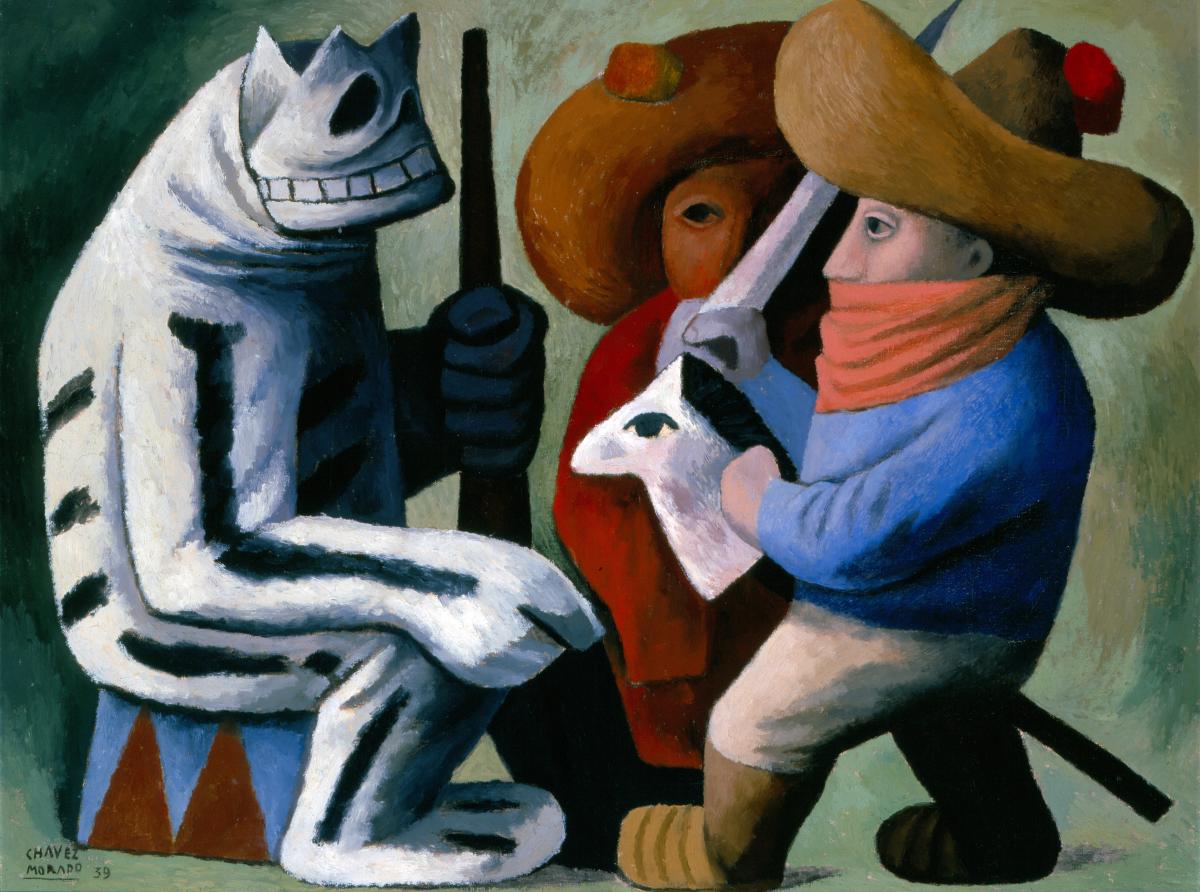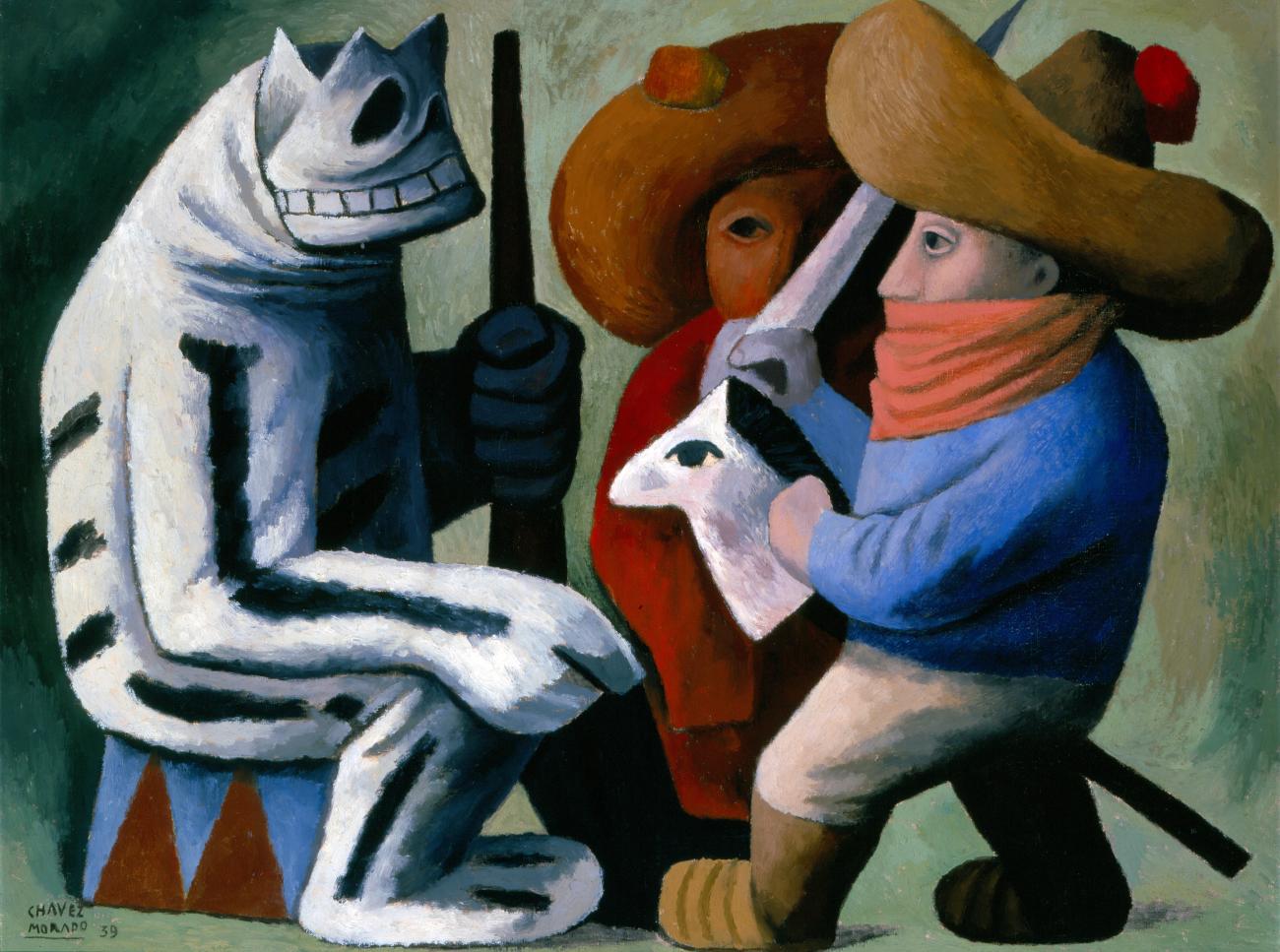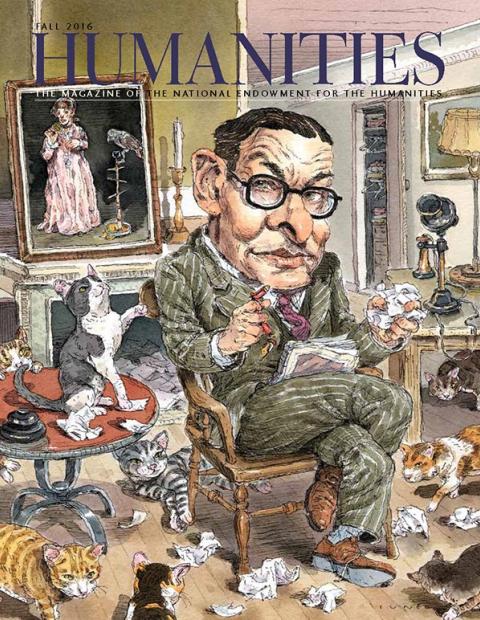The Mexican Revolution of 1910, which ended the 35-year presidency of Porfirio Díaz, is best understood as the first battle of a decade-long civil war that divided the country along economic and geographical lines. The moderate landowner Francisco I. Madero replaced Díaz in Mexico City in 1911—only to be ousted, imprisoned, and murdered two years later in a short-lived military coup by Díaz loyalists. Meanwhile, followers of Francisco “Pancho” Villa from the rural north and of Emiliano Zapata from the populist south pressed their own campaigns against the chaos, leading to a period of continued turmoil and bloodshed in which as many as 1.5 million people perished.
In a similar way, the modern art of Mexico, with a history that is often associated with the country’s Revolutionary period, was not so much a scene of swift united insurrection but, rather, an era of protracted conflict—a period, like the art that emerged from it, that remains little understood north of the border. Informed by this perspective, “Paint the Revolution: Mexican Modernism, 1910–1950,” an expansive exhibition organized by the Philadelphia Museum of Art and the Museo del Palacio de Bellas Artes, Mexico City, delves deeply into los tres grandes, “the three greats,” of Mexican mural painting—José Clemente Orozco (1883–1949), Diego Rivera (1886–1957), and David Alfaro Siqueiros (1896–1974)—but also unearths the many counterforces and divergent influences that ultimately enriched the country’s modernist legacy.
“In this environment where everything was moving and changing,” writes the Mexican scholar Renato González Mello in one of the fourteen essays for the exhibition’s expansive catalog, “the role of the artist was not so much to engage in laboratory experimentation, but rather to collect the scraps from this ever-changing social, political, and industrial world in order to build something that made sense.”
Mexican modernism was also about more than murals, which are often its only recognized manifestation abroad. “The dominance of muralism has obscured from the art-historical record practices such as ‘Estridentismo’ [also known as ‘Stridentism] that made cultural circles hum with competing visions,” the art historian Lynda Klich notes of one of the country’s modernist countermovements. Here was an international, vanguard style represented by the poet Manuel Maples Arce (1900–1981) and the painter Ramón Alva de la Canal (1892–1985) that was often at odds with the localism of the muralists and the folk art traditions advocated by artists and teachers such as Dr. Atl (1875–1964), Roberto Montenegro (1885–1968), and Adolfo Best Maugard (1891–1964). “The postrevolutionary environment fostered many artistic dialogs, including the Estridentistas’ own interrogation of what it meant to be both modern and Mexican at this time,” says Klich.
“For many years,” says Matthew Affron, the exhibition’s curator at the Philadelphia Museum, “the received story of modern Mexican art was dominated by los tres grandes . . . Orozco, Rivera, and Siqueiros, though standard accounts also had room for [Rufino] Tamayo [(1899–1991)], who positioned himself as the muralists’ competitor. The popular ascent of Frida Kahlo (1907–1954) came in the 1980s. Only in more recent times have the diverse achievements of the broader modernist artistic community been examined in greater depth.”
With more than three hundred objects—including paintings, drawings, photographs, woodcuts, and publications—“Paint the Revolution” goes far beyond the political “painted revolution” many of us associate with the famous muralists.
One point of tension was just what should be “modern” and “progressive” about Mexican art. “This exhibition alters our idea of what modern is,” Affron tells me as he opened his show. The Mexicans “might also change our understanding of what is progressive art and what is regressive art,” he adds. For one, they “complicate our ideas of realism. There are elements of murals that speak to masses, but there are also elements that are much more coded. There is an interesting dialog between an art which wants to speak to many publics at once, a wide public, and an insider public.” Drawing directly on the esoteric influence of symbolism in late nineteenth-century Mexico City, there known as “Modernista,” for example, even in its most realistic and didactic forms the art of the Mexican modernists “dislocates what is looking forward and what is looking back. This quite elite streak in modernism, that doesn’t end.”
This more cosmopolitan, “decadent” influence of Mexican art was picked up by a movement known as Contemporáneos, with artists such as Manuel Rodríguez Lozano, who cultivated a connection to Oscar Wilde and André Gide “as a strategy for publicly representing their own homosexuality,” writes the Philadelphia Museum’s Mark A. Castro, “creating a counterpoint to the hypermasculinized images of celebrated revolutionary leaders such as Francisco (Pancho) Villa and Emiliano Zapata.” Connecting in the 1930s with the Surrealist exiles from Europe, the Contemporáneos sought a pure, art-for-art’s-sake aesthetic, free of political compromise and dedicated to personal visual language.
After the Contemporáneos criticized the murals of Rivera for turning art into a “political-social instrument” for the state’s agenda, Rivera lashed out at them in 1934 as “pimps of the bourgeoisie” in an article he called "Arte puro: Puros maricones" (Pure Art: Pure Faggots), while caricaturing two of their artists in his mural panels. Orozco also derided them as los rorros Fachistas (Fascist Gay Boys) in a drawing for the publication El machete. “For the muralists,” writes the art historian Mireida Velázquez, “the revolution had signified the possibility of renewing Mexican culture; for the Contemporáneos, it represented a period of barbarity that had broken the balance established under Porfirio Díaz.”
Another point of tension was between the Marxism of muralists such as Rivera and the capitalism of their American patrons, who repeatedly lavished them with major projects. After Edsel Ford brought Rivera to the Detroit Institute of Arts to paint his most famous and brilliant stateside mural over eleven months from 1932 to 1933, Nelson Rockefeller commissioned him later that year to paint a mural of similar scope in the lobby of the new RCA Building at Rockefeller Center—even after Rivera had included a not-so-flattering portrait of Rockefeller’s grandfather in the Ministry of Public Education (SEP) murals in Mexico City. Their diverging views came to a histrionic head as Rivera departed from his original proposal and included a portrait of Lenin in his RCA lineup. Rockefeller objected, and the New York mural was destroyed—only to be reproduced back in Mexico City.
“None of them was a dupe,” says Affron. “They all knew what was going on. It cannot be an accident that during the Great Depression this American art with ancient sources, not European, a moral art, came to the attention of such a varied public. Rockefeller and the Fords understood that as patrons during the Depression they had a certain responsibility. Rivera fit the bill, but it wasn’t an easy relationship.”
Despite the mural controversy, Affron says, Abby Aldrich Rockefeller purchased Rivera’s May Day drawings and gave them to the Museum of Modern Art. “This is not a simple story. They were all living in a situation of shifting political sands.”
With repeated overtures and allusions to art history, from the Old Masters to indigenous abstraction, the Mexican modernists drew on a diverse inventory of sources that looked both forward and backward, local and international. “One of the ideas we try to hit people over the head with,” says Affron, is that “no matter how nationalist this Mexican art was, it was just as internationalist, and this is the great surprise to many people.” After training in Mexico City’s National School of Fine Arts, for example, a government scholarship brought Rivera to Montparnasse in Paris, where he lived at its moment of greatest modernist ferment from 1911 to 1921, in fact missing the direct experience of the Mexican Revolution. Instead, he became immersed in the circle of modernists around the studio building of La Ruche, a group that included the painters Chaim Soutine and Amedeo Modigliani and the poet Max Jacob. According to Mexican scholar Dafne Cruz Porchini, Rivera was also steeped in mystical beliefs as a member of a Rosicrucian order—a reason why hidden, subterranean forces can often complicate the political messages of his murals.
This all helps explain why one of Rivera’s earliest paintings now on display in “Paint the Revolution,” Portrait of Martín Luis Guzmán (1915), mixes Analytical Cubism with the Hispanism of a matador’s hat and the Mexicanidad, or “Mexicanized,” pattern of a native blanket for this depiction of a writer Rivera portrayed sitting in his Paris studio. For an artist today identified as one of Mexico’s big three muralists through a native, political, “revolutionary” style, Rivera was most influenced by this period of European high-modernist expatriation. As compared with Rivera’s revolutionary theories developed abroad, the muralist Orozco experienced the bloody revolution of Mexico first hand—one reason his work tended to focus on the disasters, rather than the aims, of war.
Beyond his contemporary influences, Rivera increasingly looked back—to Cézanne, to El Greco (whom he studied in Toledo), and finally to Italy, where Renaissance fresco initially sparked his interest in muralism. Rivera’s European influences, in fact, put his work at odds with the muralism of Siqueiros, who attempted to radicalize not only his content but his medium.
“Rivera’s mural art is a modern adaptation of an historical medium—the Mexican government financed his trip in 1921 to Italy,” says Affron. “But by the 1930s Siqueiros was loudly denying that fresco was a good way to go. He thought it was an historical anachronism, an elitist medium.” So as Rivera looked to historicized techniques in designing his murals for classical buildings from Mexico City to Detroit—trompe l’oeil frames, grisaille, illusionistic banners, and other traditional academic techniques—Siqueiros began experimenting with spray paint, synthetic pigments, and unorthodox spatial perspectives. These innovations came together in Siqueiros’s dizzying Portrait of the Bourgeoisie (1939–1940), which he painted in the stairwell of the new modernist headquarters of the Mexican electricians’ labor union and is reproduced in a special installation in “Paint the Revolution.”
This brings up a question for any exhibition on Mexican modernism: how to treat its most well-known component. “When I would speak about the exhibition, I’d say, I know what you are thinking: What about the murals?” says Affron. “The stumbling block of any exhibition of this kind is that the most famous artistic examples are bound into the walls in which they are painted.” For two major murals, Affron and his colleagues at both the Philadelphia Museum and in Mexico found a solution in high-definition video technology deployed on site. These films are used to reproduce the work as scanning projections for Rivera’s Ballad of the Agricultural Revolution (1926–27) and Ballad of the Proletarian Revolution (1928–29) from the SEP in Mexico City, and Orozco’s The Epic of American Civilization (1932–34) from Baker Library at Dartmouth College in Hanover, New Hampshire.
“It was important to us that all of the digital simulations find a way to really show they exist in architectural spaces and can only be seen in time and space,” Affron tells me. “I cared a lot about that. You must give people an equivalent version of the experience. We have a whole team here working in information technology and interpretation, and they worked with the curatorial department. Then we had to hire a very specialized team in Mexico City. You get a level of clarity and quality, and the solution was totally innovative. No one has seen it done this way. It really required everybody’s brain to add something that couldn’t be added by other means.”
Without any murals of its own—unlike its partner institution, the Museo del Palacio de Bellas Artes in Mexico City, which features murals by all three greats, including Rivera’s recast Rockefeller Center work—the Philadelphia Museum might not appear to be the first institution to choose to take on such a large-scale Mexican exhibition. But, in fact, the institution’s commitment to Mexican modernism runs as deep as any American museum’s.
Trained as an engineer in Austria, René d’Harnoncourt moved from Paris to Mexico in 1926 to try to live as a painter, but he soon established himself as a dealer and curator, first in Mexican antiquities and then for the modernists. In 1930 he organized the first exhibition of Mexican art in the United States at the Metropolitan Museum of Art.
With its grand building’s opening in 1928, the Philadelphia Museum also first looked to the Mexicans, and d’Harnoncourt, to fill out its modern collection, decades before such great modernist bequests as that of Walter and Louise Arensberg, which included Duchamp’s Nude Descending a Staircase, No. 2 (1912), enriched its collection in the 1950s.
Then, in 1943, the Philadelphia Museum organized “Mexican Art Today,” arguably the most significant exhibition of Mexican art in the United States in the twentieth century and a model for the current show. It also happens that d’Harnoncourt’s only child, Anne Julie d’Harnoncourt, served as the longtime director and later CEO of the Philadelphia Museum of Art, from 1982 until her death in 2008. “And to think that Rivera came here in 1922,” says Affron. "And René’s daughter became the director here. These are all examples of why we are the right institution to do this show.”
Today Philadelphia has one of the richest contemporary mural projects of any city. What began as an anti-graffiti initiative in the 1980s, the city’s Mural Arts Program now employs hundreds of artists a year and has become a defining characteristic of the cityscape. Is there a direct connection between this exhibition and what we now see lining the city streets? “I don’t think you can connect them as a cause and effect, but there’s a consonance of ideas,” says Affron of the Mexican muralists and Philadelphia’s contemporary examples.
“Paint the Revolution” proves yet again how the true revolution of art was modernism itself, which flowered simultaneously across continents in multiple centers of influence. “This story was both local and international from the start,” Affron concludes. “Mexican artists created a modern art that was deeply embedded in international politics and aesthetic currents, but was also rooted in Mexico’s particular experiences, history, traditions, iconography, and institutions. Looking back a century later, at a moment when a global account of modernism is emerging, Mexico between 1910 and 1950 clearly belongs at the center of the story”—with a revolution in style that remains revelatory.

